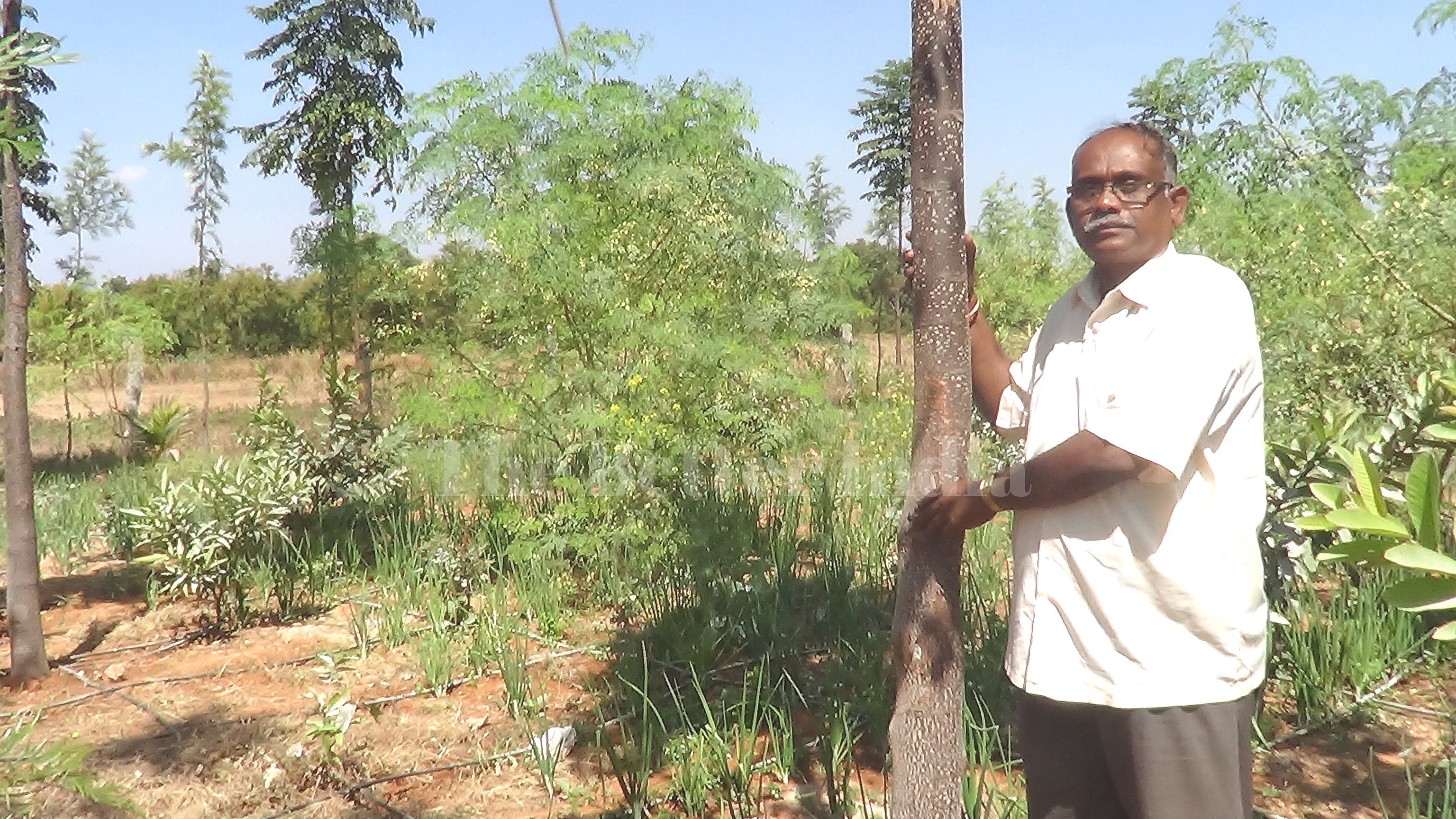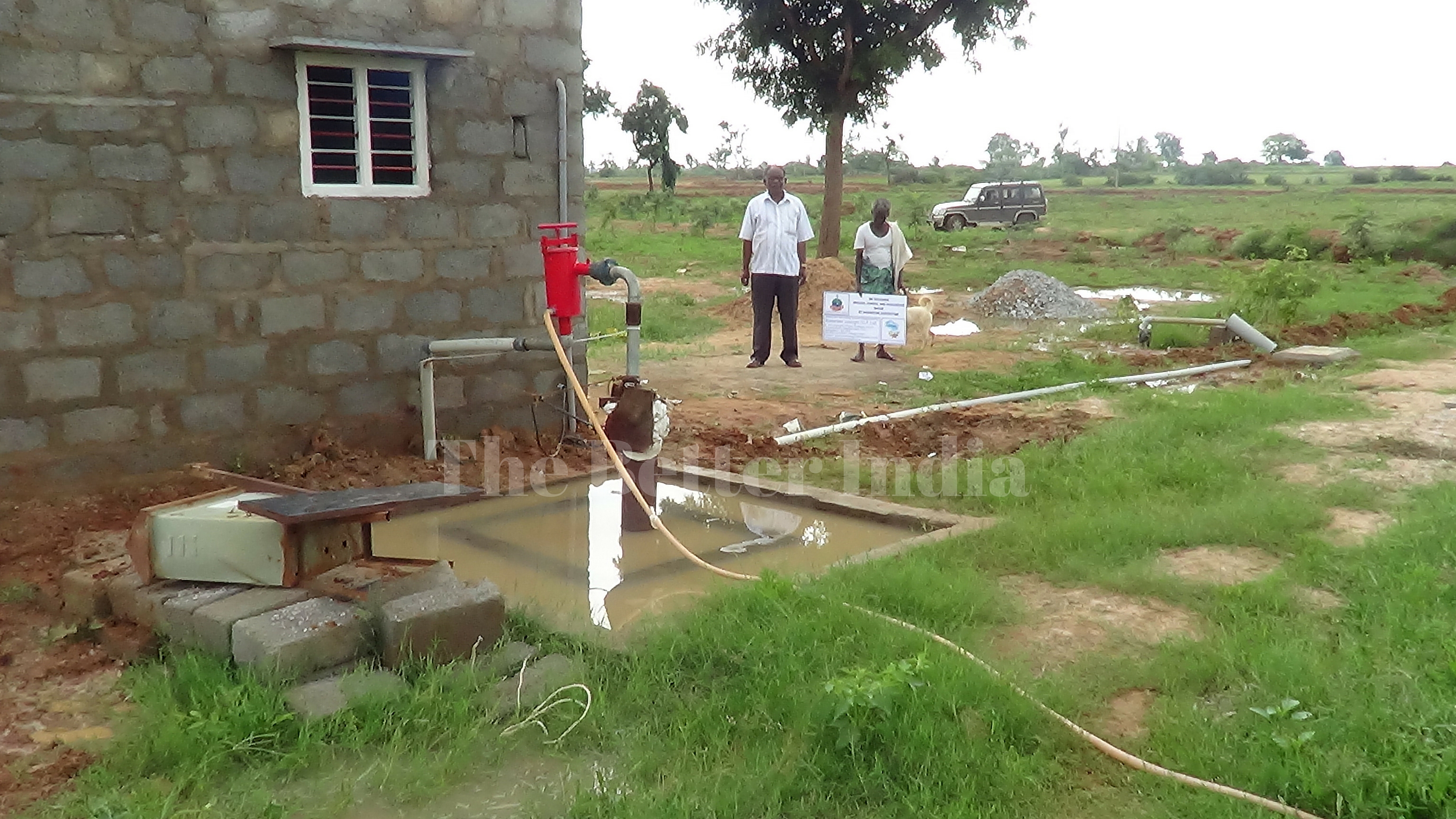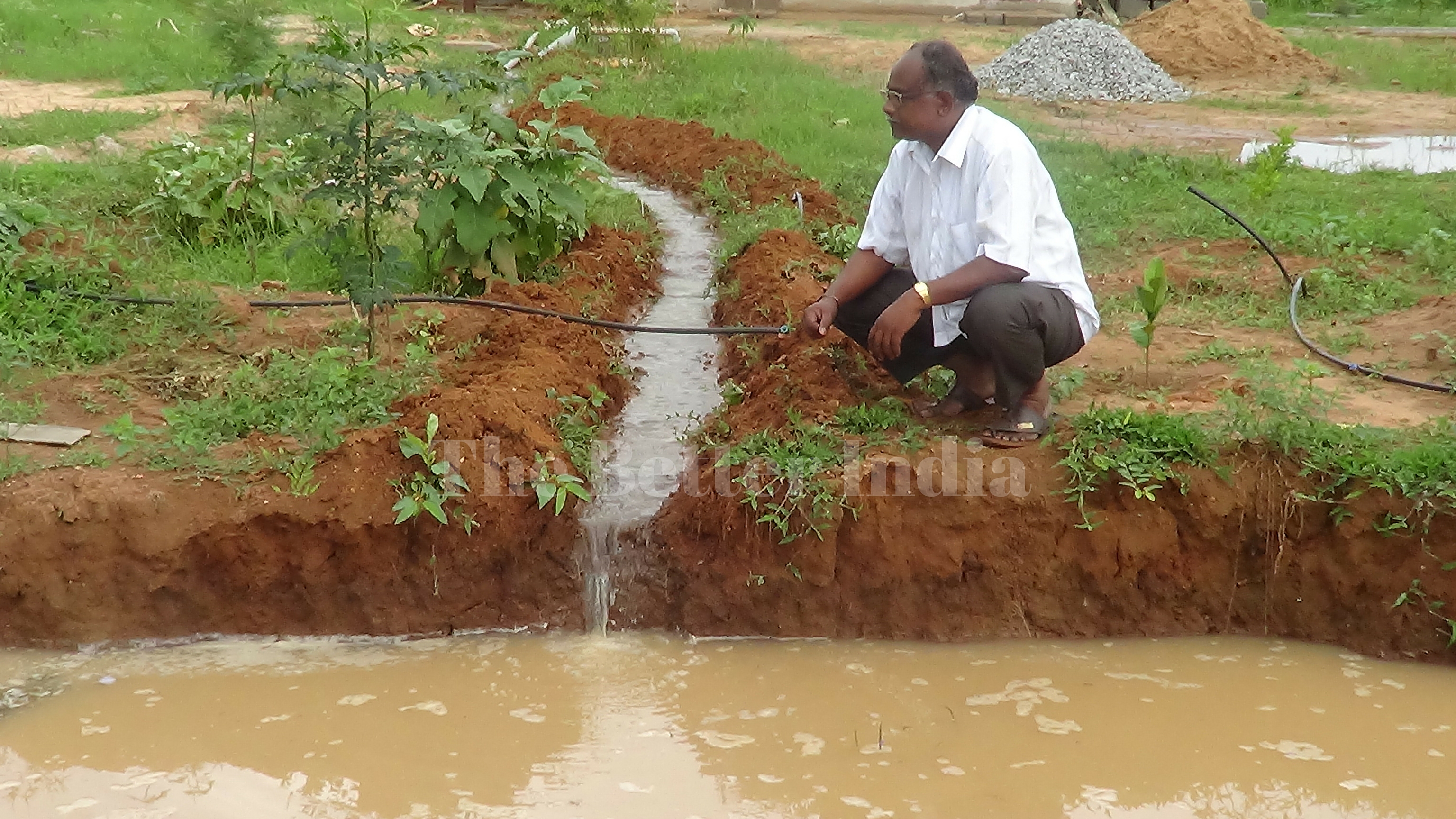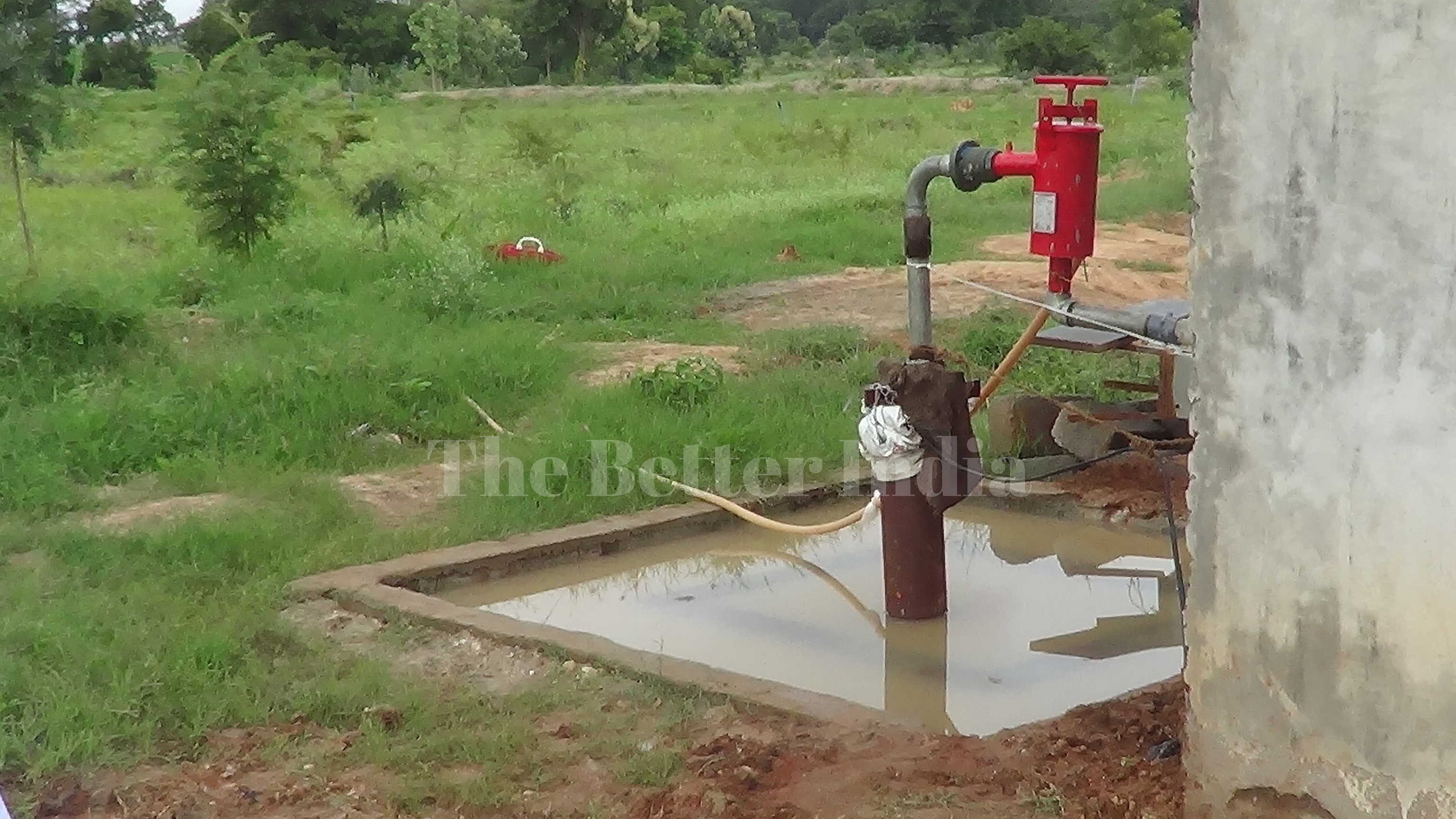India’s Water Warrior Has a Solution for India’s Droughts. The Best Part – We Can Play a Role Too!
Ayyappa Masagi has successfully implemented water conservation projects across states, industries, farms, and homes.

Ayyappa Masagi has successfully implemented water conservation projects across states, industries, farms, and homes.
For anyone who is worried about India’s water crisis, Ayyappa Masagi’s solution is simple – conserve. This man – popularly referred to as Water Magician, Water Gandhi, and Water Doctor – firmly believes that by the year 2020 India can manage its water resources well and be a water-efficient country. And if Ayyappa has his way, the country may just end up achieving this goal.
Ayyappa is famous for reversing the fortunes of thousands by getting them to practise rainwater harvesting and water conservation.

He has also recharged more borewells and constructed more lakes than probably anyone else in the country.
But he hasn’t always been actively involved in conserving water. In fact, for many years, Ayyappa was an engineer for Larsen and Toubro (L&T), before he started working in this field. Ayyappa was born into a family of poor farmers in Gadag district in Karnataka. And it is his experiences with agriculture that made him study water in his later years.
“In my childhood we faced plenty of water problems. I used to wake up with my mother at 3 am to go and fetch water. This used to happen so often that I took an oath to try and conserve water every day. In fact, throughout my growing years, I thought of ways to conserve water,” he says.
Ayyappa went through many struggles before he could get an education and get employed. His mother sold her gold so he could complete his diploma in mechanical engineering. He worked at BEML, Bengaluru, before joining L&T, where he worked for 23 years.
During his years in L&T, Ayyappa found it hard to resist the call of the earth.
He gave in and purchased six acres of land in a village in Gadag.

“In this dry region, I planted crops like rubber and coffee. I wanted to prove that one could grow these crops with whatever rain one gets. Though I was successful in the first two years my crops soon dried up due to a severe drought. The year after that, they were destroyed by floods. Though people mocked me at that point, I didn’t take it to heart. I was determined to find a solution,” he says.
This is how Ayyappa started researching how water, which is abundant at least once a year, can be conserved for the dry season. In his quest for answers, he met with experts like Anna Hazare and Rajendra Singh of Rajasthan.
After a long study, Ayyappa realised that recharging borewells and practising non-irrigational agriculture methods were the answers to the water problems farmers faced.
“I decided to use my farm as my own R&D lab. I implemented these techniques and reaped a good harvest in the two subsequent years, in the face of flood and famine. I was encouraged by the success and started spreading the message about borewell recharging and non-irrigational agricultural techniques. I tested these methods on the farms in my neighbourhood and found they worked there as well. This is what prompted me to reach out to more people,” he says.
Gradually, he quit his job at L&T and decided to work towards making India a water-efficient nation.
“We always blame nature. But that is unfair. It is we who have encouraged uncontrollable development and encroached upon land. Then how can we complain when a place like Chennai receives the rain meant for a year in three days?” asks Ayyappa.
In 2004, Ayyappa received the Ashoka Fellowship for his conservation efforts.

A year later, he established the Water Literacy Foundation, in a bid to reach out to more people and spread the message of conservation.
In 2008, Ashoka approached Ayyappa to start a for-profit wing of the Water Literacy Foundation. This is how Rain Water Concepts was launched.
Today, he finds solutions to water problems based on the size of the farm, the availability of resources, and the person’s budget. Ayyappa has orchestrated thousands of conservation projects across 11 states. He has also created over 600 lakes in the country, for which he found mention in the Limca Book of Records.
Ayyappa’s ideas are simple. He considers the earth to be the biggest filter. He captures the water, filters it and then stores it underground. His pit-based rainwater harvesting system is a structure made of boulders, gravel, sand, and mud. When it rains, water trickles through the gravel and sand. It slowly charges the subsoil. This process continues and ensures the soil is always charged with water. This method also prevents water from evaporating.
He also specialises in watershed management, inter-basin water transfer, recycling of water, etc.

“Do you know how much water every person wastes while having a bath? This water is not bad water. It can actually be reused,” he says.
Ayyappa not only provides services to individuals but to corporates and other educational institutions as well. He has also managed to create a community of ‘water warriors’ who practise his methods and educate others about them.
“Our country doesn’t need grand plans like river-linking to tackle the problem of water shortage. In fact, that project is an unnecessary expense for the government. If we need to save water, every farmer and ever organisation should plan ahead. And if they do, this country will soon become water-efficient,” he says.
Ayyappa Masagi can be contacted at [email protected]
Like this story? Or have something to share? Write to us: [email protected], or connect with us on Facebook and Twitter (@thebetterindia).
If you found our stories insightful, informative, or even just enjoyable, we invite you to consider making a voluntary payment to support the work we do at The Better India. Your contribution helps us continue producing quality content that educates, inspires, and drives positive change.
Choose one of the payment options below for your contribution-
By paying for the stories you value, you directly contribute to sustaining our efforts focused on making a difference in the world. Together, let’s ensure that impactful stories continue to be told and shared, enriching lives and communities alike.
Thank you for your support. Here are some frequently asked questions you might find helpful to know why you are contributing?


This story made me
-
97
-
121
-
89
-
167













